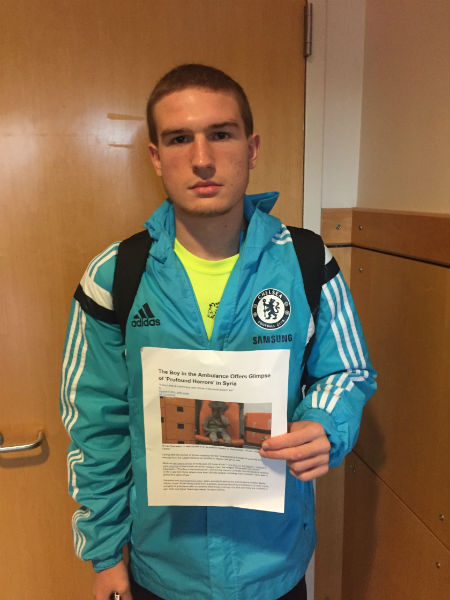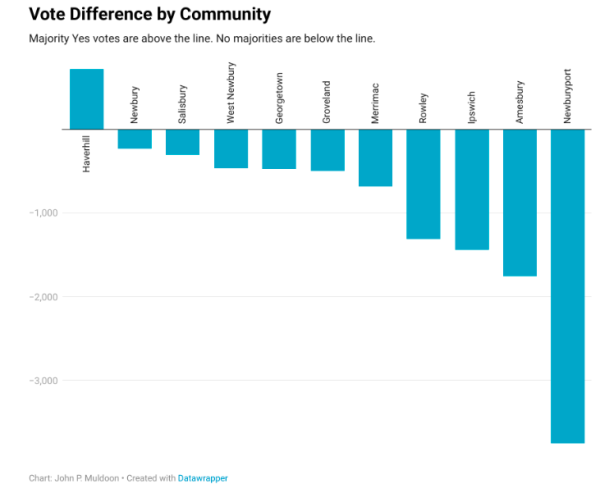The Search for a Syrian Solution
November 17, 2016

Christian neuenfeldt, a senior at Ipswich High School.
In March 2011 the Syrian people started to protest for the release of several political figures. These protests quickly turned violent when the Syrian government shot and killed several of the protesters. These shootings quickly turned the protest into a nationwide uproar. In an attempt to calm the uproar, Syrian president Assad released dozens of political prisoners. Despite this there was still a huge push to end Assad’s regime. In May of 2011, Assad sent military personnel and tanks to several Syrian cities in an attempt to quell the uprising with a show of force. Not even this would stop the anti-regime protesters. Over the following months the situation quickly escalated into an all out civil war.
Assad and his regime quickly showed that they would do anything to stop the rebels. They even bombarded cities killing thousands of civilians. In August 2012, President Barack Obama warned Assad that if he continued to act aggressively towards civilians the U.S. would intervene. In March 2013 the United States and the United Kingdom both pledged non-military aid to the Syrian rebels. Despite the warnings from the U.S., the Syrian government continued to attack anyone they felt was in the way of them controlling Syria.
The U.N. reported in September 2013 that chemical weapons were used against civilians. Since then there has been numerous reports that the Syrian government has been using chemical weapons to stop the rebellion. The use of chemical weapons is illegal in warfare, and the use of them is a war crime. Assad’s regime has been accused of many war crimes over the course of the Syrian Civil War. The Syrian Civil War has killed tens of thousands of people and has put fear into the hearts of millions.
A new problem to the Syrian situation arose in June of 2014, the Islamic State of Iraq and Syria (ISIS) claimed part of Northern Syria as part of their Caliphate. ISIS is a an Islamic terrorist organization that formed from a branch of Al Qaeda in Iraq. ISIS backed neither the Syrian government nor the rebels; they instead decided to fight to gain their own control of the region. ISIS uses terrorist tactics, such as suicide bombers, to gain advantages. ISIS quickly began forming attacks against the United States and its allies. The terrorist group even began taking Westerners hostage and publicly executing them to send a message to the Western world. ISIS quickly got a reaction from the United States and its allies. In September 2014, the U.S. and five Arab nations began airstrikes against ISIS. Many countries since then have joined the coalition against ISIS, in an attempt to eliminate the terrorist threat.
All of this fighting just brought more violence for the Syrian civilians, who were getting stuck in the crossfire. Their problems quickly got even worse when Russia joined the conflict in September of 2015. Russia claimed to be fighting ISIS, but it soon became clear that their airstrikes were against Syrian rebels. These airstrikes began taking the lives of thousands of innocent civilians. Syria had become a living hell.
In all of this violence, around 11 million Syrians have been forced from their homes. Many of them have been able to go into the neighboring countries of Jordan, Lebanon, Turkey and Iraq. However, there are still over 6 million refugees with no place to go. Finding new homes is proving to be extremely difficult. Many have gotten into European countries and even Canada. Many are attempting to enter the United States but there is huge push-back from many Americans, especially conservatives.
The main reason why most people don’t want Syrian refugees entering their country is because of the terrorist threat it poses. Along with launching attacks in Iraq and Syria, ISIS has tried to launch terrorist attacks in the Western world. They have managed to do this, such as the Paris shootings at Charlie Hebdo in 2015. There have been numerous attacks by ISIS. With millions of immigrants coming from Syria into other countries, there is a huge risk that one of them could be radicalized by ISIS. This is a logical concern that must be considered when any country lets in immigrants.
The Syrian refugee crisis has become a huge debate in U.S. politics and between the American people. Some argue that the refugees pose a major terrorist threat to the United States, because they are coming from Syria, part of which is controlled by ISIS. First off, the Syrian immigrants are screened by the United Nations before they are even able to apply for entry into the United States. Each individual is biometrically and biologically examined to prove who they really are; then they begin the vetting process to get into the United States. The vetting process that they must go through takes anywhere from eighteen to twenty-four months. In this time, each person is examined and interviewed by the FBI, CIA, State Department, Defense Department, Homeland security and other intelligence agencies. The end result of all this vetting, admitting refugees poses a very small terrorist threat.
On the other side of the argument, people make the point that we have a moral obligation to help these refugees. They argue that it is un-American, our country has always let in immigrants, in fact our entire country was created by immigrants. How can we now turn our backs to them?
Even high school students are becoming part of the debate. Christian Neuenfeldt, a senior at Ipswich High School, said, “We should help the refugees, as long as they aren’t terrorists.” Christian also said, “The Syrians we do let need to be repeatedly interrogated to try and find those that are terrorists.” Christian shares the views of many high schoolers, that there’s not a good enough reason to not help the Syrian refugees. Experts on the situation have increasingly reported on how the number of refugees is growing rapidly. According to www.mercycorps.org, “There are more than 4.7 million Syrian refugees in neighboring countries. Nearly one million have applied for asylum in the safety of Europe. More than 13.5 million people are still in need of assistance inside Syria.” Still, there are people who see that bringing in refugees would just bring trouble. They have good reason to feel this way. It would come to no surprise if ISIS sent one of their soldiers to the U.S. posed as a refugee.
Mr. Ames, an Ipswich High School history teacher said, “We should regulate the amount of refugees that come into the U.S. and that letting refugees into the U.S. could pose a potential terrorist threat.”
The Syrian refugee crisis is becoming more and more of a global issue. The bigger the situation gets the more solutions people come up with to solve the problem. Some are better than others. No matter what solution you back, we all stand for a common goal: to make Syria a safe place again so its people won’t have to flee from it.






